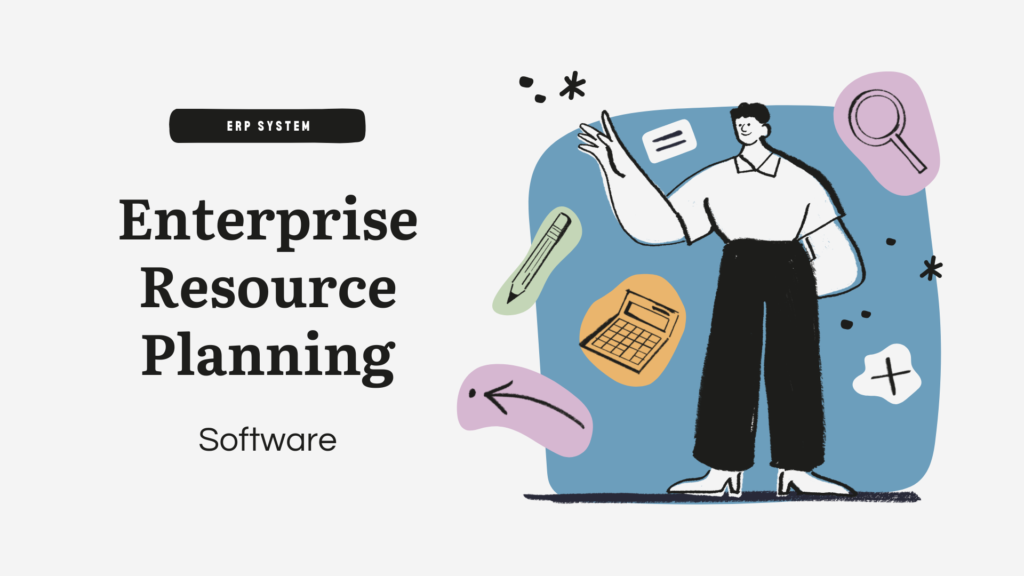A Comprehensive Guide to the All-in-One Business Management Solution
In today’s rapidly evolving business landscape, companies are constantly searching for tools that streamline operations, enhance productivity, and drive growth. One such tool that has gained significant attention in recent years is ERPNext. As businesses navigate complex supply chains, financial management, and customer relationships, an effective Enterprise Resource Planning (ERP) system becomes indispensable. ERPNext stands out as a versatile, open-source ERP solution that caters to a wide range of industries, from manufacturing and retail to healthcare and education.
ERPNext is not just another ERP system; it’s a robust, user-friendly platform designed to meet the unique needs of small to medium-sized enterprises (SMEs) while also being scalable for larger organizations. Developed by Frappe Technologies, ERPNext offers a comprehensive suite of applications that covers everything from accounting and inventory management to human resources and project management. The platform’s open-source nature allows for extensive customization, making it a flexible solution that can adapt to the specific requirements of any business.
What sets ERPNext apart from other ERP solutions is its affordability and ease of use. Traditional ERP systems are often expensive and complex, requiring significant investment in both time and money. ERPNext, on the other hand, provides a cost-effective alternative that doesn’t compromise on features or functionality. Its intuitive interface ensures that even users with limited technical expertise can navigate the system with ease, while its modular design allows businesses to implement only the features they need, without overwhelming their operations.
Moreover, ERPNext is cloud-based, offering the convenience of accessing business data from anywhere at any time. This accessibility is particularly beneficial for businesses with remote teams or multiple locations, ensuring that everyone stays connected and informed. The platform also integrates seamlessly with other tools and applications, further enhancing its utility in a business environment.
In this detailed guide, we will explore the various aspects of ERPNext, from its key features and benefits to its implementation and customization options. Whether you’re considering ERPNext for your business or are simply curious about how it compares to other ERP solutions, this article will provide you with the insights you need to make an informed decision.
What is ERPNext?
ERPNext is a full-featured, open-source ERP software designed to manage a company’s entire business processes. It offers modules for accounting, inventory management, human resources, customer relationship management (CRM), manufacturing, and more. Developed on a modern, web-based architecture, ERPNext is highly customizable and scalable, making it suitable for businesses of all sizes across various industries.
Key Features of ERPNext
- Accounting and Finance ERPNext provides a comprehensive suite of financial management tools, including general ledger, accounts payable and receivable, expense tracking, asset management, and financial reporting. The platform supports multi-currency transactions and allows for automated invoice generation, payment reminders, and reconciliation processes.Quoting from the ERPNext documentation, “The accounting module is designed to offer complete visibility into your financial operations, enabling better decision-making and financial planning.” This feature is crucial for businesses looking to maintain accurate financial records and streamline their accounting processes.
- Inventory Management Efficient inventory management is critical for businesses that deal with physical goods. ERPNext offers robust inventory management capabilities, including real-time stock tracking, warehouse management, and automated reordering. The platform also supports batch and serial number tracking, making it easier to manage inventory across multiple locations. The system’s inventory management feature is particularly beneficial for businesses that need to maintain optimal stock levels and reduce inventory holding costs. As per the ERPNext team, “Our inventory management module ensures that you always have the right products in the right place at the right time.”
- Human Resources Managing a workforce effectively requires a comprehensive human resources module, and ERPNext delivers just that. The HR module includes employee records, payroll management, attendance tracking, performance evaluations, and recruitment tools. ERPNext also supports employee self-service portals, allowing staff to manage their profiles, submit leave requests, and view payslips online.According to ERPNext experts, “Our HR module simplifies employee management, ensuring that HR teams can focus on strategic tasks rather than administrative work.” This feature is invaluable for businesses looking to enhance employee satisfaction and streamline HR processes.
- Customer Relationship Management (CRM) A robust CRM module is essential for managing customer interactions and driving sales growth. ERPNext’s CRM module allows businesses to track leads, opportunities, and customer communications. It also includes tools for managing customer support tickets and service contracts, ensuring that customer satisfaction remains high.”The CRM module in ERPNext helps businesses build stronger relationships with their customers, resulting in improved customer retention and increased sales,” says the ERPNext development team. This feature is crucial for businesses aiming to enhance their customer service and drive growth.
- Manufacturing ERPNext’s manufacturing module is designed to streamline production processes, from managing bill of materials (BOM) and production planning to tracking work orders and quality control. The module integrates seamlessly with other ERPNext features, such as inventory management and accounting, ensuring that production costs are accurately tracked and managed.”Our manufacturing module helps businesses optimize their production processes, reduce waste, and improve product quality,” according to ERPNext documentation. This feature is particularly beneficial for manufacturing companies looking to enhance efficiency and reduce production costs.
- Project Management Effective project management is crucial for businesses that handle multiple projects simultaneously. ERPNext offers a project management module that allows businesses to plan, execute, and monitor projects from start to finish. The module includes tools for task management, time tracking, and project budgeting, ensuring that projects are completed on time and within budget.As per the ERPNext project management team, “Our project management module provides businesses with the tools they need to manage projects effectively, ensuring that they deliver value to their customers.” This feature is essential for businesses that need to manage complex projects and meet tight deadlines.
Benefits of Using ERPNext
- Cost-Effective One of the primary benefits of ERPNext is its cost-effectiveness. Unlike traditional ERP systems that require significant upfront investment, ERPNext offers an affordable solution with a lower total cost of ownership (TCO). The platform’s open-source nature means that businesses can avoid costly licensing fees and instead invest in customization and implementation.
- Scalable and Customizable ERPNext is highly scalable, making it suitable for businesses of all sizes. Whether you’re a small startup or a large enterprise, ERPNext can be tailored to meet your specific needs. The platform’s modular design allows businesses to implement only the features they need, while its open-source codebase allows for extensive customization.As stated by the ERPNext team, “Our platform is designed to grow with your business, ensuring that you always have the tools you need to succeed.” This scalability is particularly beneficial for businesses that anticipate growth and need a system that can adapt to their changing needs.
- User-Friendly Interface ERPNext’s user-friendly interface ensures that users can navigate the system with ease, even if they have limited technical expertise. The platform’s intuitive design reduces the learning curve and ensures that employees can start using the system quickly and efficiently.”ERPNext is designed to be user-friendly, with an interface that is easy to navigate and understand,” says the ERPNext design team. This feature is crucial for businesses that want to minimize training costs and ensure that employees can use the system effectively.

- Comprehensive Reporting and Analytics ERPNext offers comprehensive reporting and analytics tools that provide businesses with valuable insights into their operations. The platform includes pre-built reports for various modules, as well as tools for creating custom reports and dashboards. These insights help businesses make informed decisions and identify areas for improvement.According to the ERPNext analytics team, “Our reporting and analytics tools provide businesses with the data they need to make informed decisions and drive growth.” This feature is essential for businesses that want to optimize their operations and improve performance.
- Integration Capabilities ERPNext integrates seamlessly with a wide range of third-party applications, allowing businesses to extend the platform’s functionality and streamline their operations. The platform supports integrations with popular tools like Shopify, WooCommerce, Google Calendar, and Slack, as well as custom integrations via API.”ERPNext’s integration capabilities ensure that businesses can connect the tools they use every day, enhancing productivity and efficiency,” says the ERPNext integration team. This feature is particularly beneficial for businesses that rely on multiple applications to manage their operations.
Implementation of ERPNext
Implementing ERPNext involves several steps, from planning and preparation to configuration and training. Below is a detailed guide to the implementation process:
Step 1: Planning and Preparation
The first step in implementing ERPNext is to plan and prepare for the project. This involves defining your business requirements, setting implementation goals, and assembling a project team. It’s also important to create a timeline and budget for the implementation process.
According to ERPNext implementation experts, “Proper planning is essential to ensure a successful ERP implementation.” This step is crucial for businesses that want to avoid delays and ensure that the project stays on track.
Step 2: Data Migration
Data migration is a critical step in the ERPNext implementation process. This involves transferring your existing data from legacy systems to the ERPNext platform. Data migration should be carefully planned and executed to ensure that all data is accurately transferred and that there are no data integrity issues.
“Data migration is one of the most challenging aspects of ERP implementation, but it’s essential to ensure that your new system has accurate and complete data,” says the ERPNext data migration team. This step is particularly important for businesses that have large volumes of data to migrate.
Step 3: Configuration and Customization
Once your data has been migrated, the next step is to configure and customize ERPNext to meet your specific business needs. This involves setting up modules, defining workflows, and customizing the system to align with your business processes.
As stated by ERPNext experts, “Configuration and customization are key to ensuring that ERPNext meets your unique business requirements.” This step is crucial for businesses that need a tailored solution that aligns with their operations.
Step 4: Testing and Training
Before going live with ERPNext, it’s important to thoroughly test the system to ensure that it functions as expected. This involves testing each module, running test scenarios, and identifying any issues that need to be addressed.
According to the ERPNext testing team, “Testing is an essential part of the implementation process, helping to identify and resolve any issues before going live.” This step is particularly important for businesses that want to ensure a smooth transition to the new system.
Training is also a critical part of the implementation process. Employees need to be trained on how to use ERPNext effectively, and this training should be tailored to their specific roles and responsibilities.
“Training is key to ensuring that your employees can use ERPNext effectively,” says the ERPNext training team. This step is crucial for businesses that want to minimize disruption and ensure that employees can use the system efficiently.
Step 5: Go-Live and Support
The final step in the ERPNext implementation process is to go live with the system. This involves transitioning from your legacy systems to ERPNext and ensuring that all users are fully onboarded. It’s also important to have ongoing support in place to address any issues that arise after going live.
As stated by ERPNext support experts, “Ongoing support is essential to ensure that your ERP system continues to function effectively after go-live.” This step is crucial for businesses that want to ensure the long-term success of their ERP implementation.
Customization Options in ERPNext
One of the key advantages of ERPNext is its extensive customization options. Below are some of the ways you can customize ERPNext to meet your specific business needs:
1. Custom Fields and Forms
ERPNext allows you to add custom fields and forms to the platform, enabling you to capture the specific data you need. This customization option is particularly beneficial for businesses with unique data requirements.
According to ERPNext customization experts, “Custom fields and forms allow businesses to tailor the platform to their specific needs, ensuring that they capture the data that is most important to them.”
2. Custom Workflows
ERPNext supports custom workflows, allowing you to define the specific steps that need to be followed for various business processes. This customization option is particularly beneficial for businesses that have complex workflows that need to be automated.
As stated by ERPNext experts, “Custom workflows help businesses automate their processes, reducing the risk of errors and improving efficiency.”
3. Custom Reports and Dashboards
ERPNext allows you to create custom reports and dashboards, enabling you to track the key metrics that are most important to your business. This customization option is particularly beneficial for businesses that need to monitor performance and make data-driven decisions.

According to the ERPNext analytics team, “Custom reports and dashboards provide businesses with the insights they need to optimize their operations and drive growth.”
4. Integration with Third-Party Applications
ERPNext supports integration with a wide range of third-party applications, allowing you to extend the platform’s functionality and streamline your operations. This customization option is particularly beneficial for businesses that rely on multiple applications to manage their operations.
As stated by the ERPNext integration team, “Integration with third-party applications enhances the platform’s utility, enabling businesses to connect the tools they use every day.”
5. Custom Scripts and APIs
For businesses with more advanced customization needs, ERPNext supports custom scripts and APIs, allowing you to create custom functionality and integrations. This customization option is particularly beneficial for businesses with unique requirements that cannot be met with the platform’s standard features.
According to ERPNext developers, “Custom scripts and APIs allow businesses to extend the platform’s capabilities and create custom functionality that meets their specific needs.”
ERPNext vs. Other ERP Solutions
ERPNext is often compared to other ERP solutions on the market. Below is a comparison of ERPNext with some of the most popular ERP systems:
ERPNext vs. SAP
SAP is one of the most widely used ERP systems in the world, particularly among large enterprises. While SAP offers a comprehensive suite of features, it is also known for its high cost and complexity. ERPNext, on the other hand, offers a more affordable and user-friendly alternative that is better suited to small and medium-sized businesses.
“ERPNext is a cost-effective and user-friendly alternative to SAP, offering similar functionality at a fraction of the cost,” says ERPNext experts.
ERPNext vs. Oracle
Oracle is another popular ERP system, particularly among large enterprises. Like SAP, Oracle offers a comprehensive suite of features but is also known for its high cost and complexity. ERPNext offers a more affordable and user-friendly alternative that is better suited to small and medium-sized businesses.
According to ERPNext experts, “ERPNext is a viable alternative to Oracle, offering similar functionality at a much lower cost.”
ERPNext vs. Microsoft Dynamics
Microsoft Dynamics is a popular ERP system among small and medium-sized businesses. While Microsoft Dynamics offers a comprehensive suite of features, it is also known for its high cost and complexity. ERPNext offers a more affordable and user-friendly alternative that is better suited to small and medium-sized businesses.
As stated by ERPNext experts, “ERPNext is a more affordable and user-friendly alternative to Microsoft Dynamics, offering similar functionality without the high cost.”
ERPNext vs. Odoo
Odoo is another open-source ERP system that is often compared to ERPNext. While both systems offer similar functionality, ERPNext is known for its more user-friendly interface and better customization options. Odoo, on the other hand, offers a larger selection of modules but is also known for its complexity.

According to ERPNext experts, “ERPNext offers a more user-friendly interface and better customization options than Odoo, making it a better choice for businesses with specific requirements.”
Common FAQ’s
1) What is ERPNext Used For?
ERPNext is a versatile, open-source Enterprise Resource Planning (ERP) software that is used to manage and streamline various business processes across different industries. It provides an all-in-one solution for functions such as accounting, inventory management, human resources, sales, customer relationship management (CRM), project management, and manufacturing. The platform is designed to improve efficiency by integrating these various functions into a single system, allowing businesses to have real-time visibility into their operations.
Businesses use ERPNext to automate routine tasks, enhance productivity, and make data-driven decisions. For example, it can be used to track financial transactions, manage supply chain logistics, oversee employee records, and handle customer interactions—all from a unified interface. ERPNext is particularly popular among small to medium-sized enterprises (SMEs) due to its affordability, ease of use, and extensive customization capabilities.
2) Can I Use ERPNext for Free?
Yes, you can use ERPNext for free. ERPNext is open-source software, meaning that its source code is freely available for anyone to download, use, and modify. You can self-host ERPNext on your own server without any licensing fees. This makes it an attractive option for businesses that want a robust ERP system without the high costs typically associated with commercial ERP solutions.
However, while the software itself is free, there may be costs associated with implementation, customization, and ongoing maintenance. If you prefer not to manage the technical aspects yourself, ERPNext also offers paid cloud hosting services, which include technical support, regular updates, and server maintenance. These paid plans provide additional convenience and peace of mind for businesses that prefer a managed solution.
3) What is the Difference Between SAP and ERPNext?
The primary difference between SAP and ERPNext lies in their target audience, cost structure, and complexity. SAP is a globally recognized ERP solution, often used by large enterprises with complex and extensive business processes. It offers a wide range of features and modules, but it is also known for its high cost and significant implementation time. SAP is typically more complex, requiring extensive training and often necessitating the involvement of certified SAP consultants for customization and maintenance.
ERPNext, on the other hand, is an open-source ERP solution that is more accessible to small and medium-sized enterprises (SMEs). It offers a comprehensive suite of features similar to SAP but at a fraction of the cost. ERPNext is designed to be user-friendly, with an intuitive interface and easier implementation process, which makes it more suitable for businesses that do not have the resources to manage the complexity and costs associated with SAP.
4) What is the Difference Between ERP and ERPNext?
The term “ERP” (Enterprise Resource Planning) refers to a broad category of software systems designed to manage and integrate the core business processes of an organization, such as finance, supply chain, human resources, and manufacturing. ERP is a general concept, and there are many ERP software solutions available in the market, each with its own set of features, target industries, and pricing models.
ERPNext is one specific ERP software solution within this broader category. It distinguishes itself from other ERP systems by being open-source, highly customizable, and user-friendly. While “ERP” can refer to any enterprise resource planning system, “ERPNext” specifically refers to the open-source platform developed by Frappe Technologies. ERPNext provides a modular approach, allowing businesses to select and implement only the features they need, making it a flexible and cost-effective option compared to many proprietary ERP systems.
ERP is a general term that describes the software category, ERPNext is a specific ERP solution that offers unique benefits like open-source access, affordability, and scalability.
Conclusion
ERPNext is a powerful, flexible, and affordable ERP solution that is suitable for businesses of all sizes across various industries. Its comprehensive suite of features, combined with its open-source nature, makes it a popular choice among small and medium-sized enterprises (SMEs) looking for a cost-effective and scalable ERP system.
Whether you are looking to streamline your accounting processes, manage your inventory more effectively, or enhance your customer relationships, ERPNext offers the tools and flexibility you need to succeed. With its extensive customization options, seamless integrations, and user-friendly interface, ERPNext is well-positioned to meet the unique needs of your business and drive growth in today’s competitive market. To know information on pricing please browse ERPNext’s company page
In a nutshell, ERPNext is not just an ERP system; it’s a comprehensive business management solution that can help you optimize your operations, improve efficiency, and achieve your business goals. If you’re considering an ERP solution for your business, ERPNext is definitely worth exploring.
Curated Reads:






You are a very smart individual!
I like the efforts you have put in this, regards for all the great content.